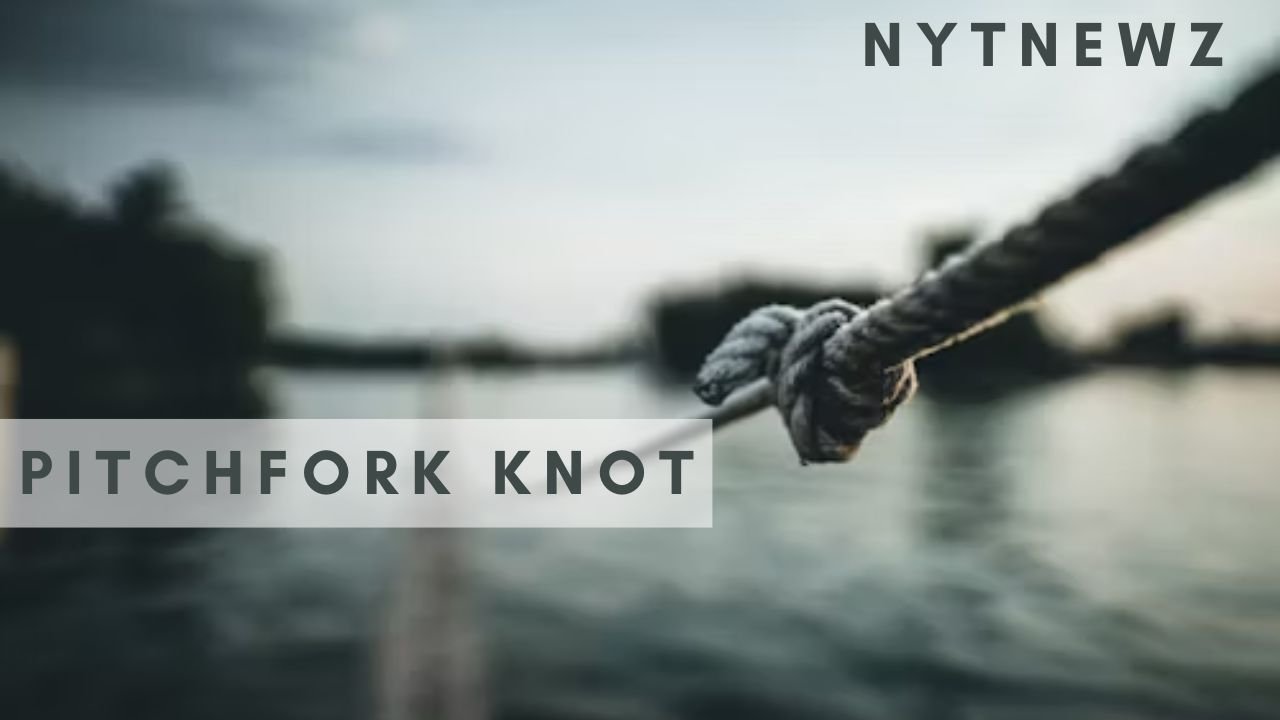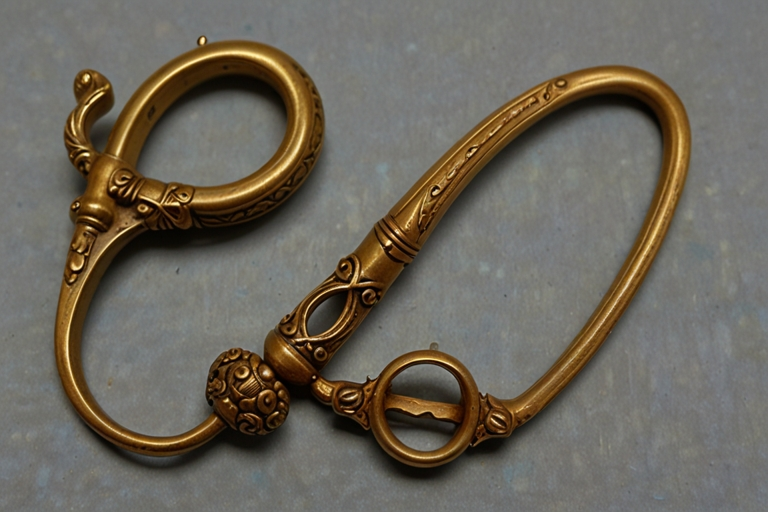The Pitchfork Knot: A Comprehensive Guide
Introduction
Knots have been an essential part of human history, evolving over centuries to satisfy numerous desires, from cruising to hiking or even for everyday tasks. Among the multitude of knots, the Pitchfork Knot stands out due to its unique shape and packaging. This article takes a deep dive into the Pitchfork Knot, examining its records and using versions and step-by-step instructions on how to tie it.
History of the Pitchfork node
The origin of the Pitchfork Knot is really hard to understand without a definitive account of its first use. However, it is believed to have been developed by sailors and fishermen who required safe and reliable knots for their disruptive duties. The name “Fork Knot” probably derives from its resemblance to a pitchfork, which was an unusual device among farmers and sailors. As with many knots, its design has probably become subtle over the generations, improving its electricity and ease of tying with each new release.
Evolution and development
The development of the Pitchfork Knot reflects the ingenuity of the people who trusted it. In addition, earlier variants may have been simpler, with fewer loops and much less complicated weaving. Over time, as demands on knots multiplied, so did the complexity and reliability of the Pitchfork Knot. Historical records from sea logs and seafaring magazines often mention numerous knots used in rigging and fishing, suggesting a slow development. In the nineteenth century, the Pitchfork knot became a staple of many sailors’ repertoires, prized for its ability to hold under heavy loads without slipping.
Pitchfork node characteristics
The Pitchfork knot features a unique shape that includes more than one loop and an exceptional weaving pattern. This structure confers several blessings: it distributes tension smoothly across the knot, reduces the risk of slippage, and facilitates untying after exposure to stress. Its fork-like appearance is both practical and aesthetically fascinating. The node arrangement ensures that it remains stable even under heavy stress, making it best for life-critical applications.
Use in sailing
In the sailing arena, Pitchfork Knot has numerous packages. Sailors use it to secure trunks, attach sails, or even during rescue operations. Its potential to withstand heavy masses and harsh marine conditions makes it integral. For example, it is regularly used to stabilize guy lines, the tension that raises and lowers sails and ensures they stay in place even in high winds. The reliability of the knot is essential to stop accidents and ensure the protection of the team and the vessel.
Applications in climbing
Additionally, climbers followed the Pitchfork knot for its energy and reliability. In hiking, nodes are important for security, and the Pitchfork node’s potential to maintain organization under dynamic masses makes it popular. It is used in a variety of scenarios, from securing ropes to anchors, tying them into harnesses, and creating belay anchors. The stability and easy control of the knot are especially valued when hiking, where any malfunction can cause critical injury or worse.
Everyday use
In addition to specialized decks, Pitchfork Knot is also beneficial in common situations. Whether it’s securing cargo in a truck, tying down tent tools, or perhaps in crafting and DIY initiatives, the versatility of this knot is unsurpassed. Its ease of tying and untying combined with its strength makes it a knot for many family duties. For example, gardeners use it to stabilize plant life on stakes, even as campers rely on it to pitch tents and secure tarps.
A variation of the Pitchfork knot
Over the years, there have been many variations of the sickle knot, each with a special blessing. Some variations include additional loops or unique weaving patterns to enhance strength or make knot-tying easier. These variations allow customers to choose a high-quality version according to their unique wishes. For example, the double Pitchfork Knot provides extra protection for important packages, although a simplified version can be used for less demanding duties.
Advantages and disadvantages
Like all nodes, the Pitchfork node has its advantages and disadvantages. Among its most important advantages are high performance, reliability, and simplicity of binding. However, this cannot now be the desire for every scenario. For example, tying can be more complicated compared to less complicated knots and can slip if tied incorrectly. Understanding these aspects helps users decide when and where to use Pitchfork Knot most effectively.
Safety Considerations
Safety is paramount during the use of any knot, mainly in high-risk activities like sailing and mountaineering. It’s vital to exercise tying the Pitchfork Knot under controlled conditions before relying on it in critical conditions. Regularly analyzing the knot for put on and making sure it is tied effectively each time can save you from accidents. Educating all users at the right strategies and ability pitfalls of the Pitchfork Knot can considerably decorate protection.
The Pitchfork Knot in History and Culture
The Pitchfork Knot, like many knots, has woven its way into diverse cultural narratives and historic contexts. In maritime folklore, knots frequently represent energy and team spirit, and the Pitchfork Knot is no exception. Sailors would every so often include knots into their tattoos, along with the Pitchfork Knot, as a symbol of their bond with the sea and their crew. Additionally, the knot’s resemblance to a pitchfork, a tool associated with hard work and perseverance, has made it a metaphor for resilience and steadfastness in numerous cultures.
The Science Behind the Pitchfork Knot
Understanding the mechanics of the Pitchfork Knot famous for why it’s so powerful. When anxiety is carried out, the multiple loops and turns inside the knot distribute the force flippantly, lowering the possibility of the rope breaking at any single point. This even distribution of pressure makes the knot especially immune to slipping, a critical function for its use in excessive-pressure environments. The friction created by way of the overlapping rope sections also plays a critical position in preserving the knot’s integrity under load.
Pitchfork Knot vs. Other Knots
Comparing the Pitchfork Knot to different popular knots can highlight its unique benefits and capacity drawbacks. For example, the Bowline Knot is understood for its simplicity and ease of untying, even after being subjected to heavy hundreds. However, it doesn’t offer an equal level of security because of the. On the other hand, the Figure-Eight Knot is fairly stable and easy to inspect but may be extra hard to untie. The Pitchfork Knot strikes stability among those extremes, presenting each security and simplicity of untying.
Training and Education
Proper education in tying the Pitchfork Knot is essential for individuals who intend to apply it in critical applications. Many sailing and climbing courses encompass practice on this knot due to its reliability. Additionally, various online resources, including videos and step-by-step tutorials, are to be had to help individuals learn and best their knot-tying capabilities. Practicing with special kinds of ropes and underneath numerous conditions also can beautify proficiency.
Modern Innovations
In current years, advancements in rope technology and substances have stimulated how knots just like are used. Modern synthetic ropes, with their better energy-to-weight ratios and resistance to environmental elements, can beautify the performance of traditional knots. The Pitchfork Knot, when tied with those advanced substances, keeps its reliability even by making the most of the advanced traits of contemporary ropes. Innovations in rope coatings and treatments have similarly prolonged the knot’s applicability.
Psychological Aspects
The system of tying knots, such as the Pitchfork Knot, has been proven to have mental blessings. The repetitive and focused nature of knot-tying will have a chilled impact, similar to meditation. For many sailors, climbers, and outside fans, the act of tying knots becomes a ritual that facilitates them to prepare mentally for the duties ahead. This mental practice may be as vital as the bodily reliability of the knot itself.
Environmental Considerations
Using knots just like the Pitchfork Knot in outdoor activities often intersects with environmental concerns. For example, in mountain climbing and tenting, it’s critical to make certain that knots and ropes do not harm bushes or different herbal functions. The potential to distribute pressure flippantly can reduce the effect on anchor points, making it an extra environmentally pleasant choice. Educating customers approximately minimizing their environmental footprint while using knots is an important issue of the accountable outside hobby.
Pitchfork Knot in Emergency Situations
In emergency eventualities, can be a lifesaver. Its reliability under pressure makes it appropriate for rescue operations, inclusive of securing sufferers in the course of evacuations or creating makeshift harnesses. Emergency responders often teach with this knot to ensure they can install it quickly and successfully while needed. The knot’s ability to keep securely without slipping is important in excessive-stress situations in which lives are at stake.
Innovations and Future Trends
The future of knot-tying, inclusive of the usage of the Pitchfork Knot, can also see further improvements as new substances and strategies are advanced. Research into clever ropes, that could reveal anxiety and pressure, ought to enhance the safety and effectiveness of traditional knots. Additionally, digital and augmented reality training tools are being evolved to provide more immersive and powerful education reports for those getting to know how to tie knots.
Pitchfork Knot in Search
The Pitchfork Knot ted an essential function in seek and rescue operations because of its reliability and power. Rescue teams frequently face unpredictable conditions and require knots that they can agree with implicitly. The potential to remain steady under dynamic loads makes it ideal for hoisting victims, securing systems, and putting in anchors in rescue situations. Training for seek and rescue teams regularly includes studying, ensuring they can deploy it quickly and efficiently underneath strain.
Teaching the Pitchfork Knot
Educational programs for various fields regularly consist of knot-tying as a fundamental talent. Teaching the Pitchfork Knot entails an arms-on technique, permitting college students to practice repeatedly until they acquire talent. Instructors emphasize the significance of understanding each step’s cause and the physics at the back of the knot’s protection. Visual aids, interactive periods, and actual-life applications assist beef up the gaining knowledge of manner, making sure that students can tie the knot efficaciously and hopefully.
Knot-Tying Competitions
Knot-tying competitions are famous in maritime colleges, scouting events, and out-of-door abilities-demanding situations. The Pitchfork Knot is frequently blanketed in those contests because of its complexity and the talent required to tie it efficaciously. Competitors are judged on pace, accuracy, and the knot’s capability to maintain beneath load. These competitions no longer only test participants’ technical abilities but additionally promote the sensible significance of knots in regular and specialized obligations.
Innovations in Rope Materials
Advances in the rope era have always progressed the effectiveness of traditional knots just like the Pitchfork Knot. Modern ropes crafted from high-tech materials along with Dyneema, Spectra, and Technora offer higher tensile power, greater durability, and resistance to environmental factors. These improvements have accelerated the applications, making it suitable for extreme situations, along with excessive-altitude mountain climbing and deep-sea fishing.
Conclusion
The Pitchfork Knot, with its rich records, unique structure, and versatile programs, remains a precious tool in many fields. Its energy, reliability, and ease of use make it crucial in cruising, mountain climbing, and ordinary tasks. Whether you are securing a load, raising a sail, or tying into a hiking harness, studying is a worthwhile skill. Its endured relevance in modern-day times highlights the enduring significance of traditional knot-tying understanding. As new materials and strategies emerge, the foundational standards of the Pitchfork Knot will remain vital.
Q. How does the Pitchfork Knot compare to other knots?
The Pitchfork Knot increases stability among security and simplicity of untying, making it extra steady than less difficult knots just like the Bowline, and less complicated to untie than more complicated knots just like the Figure-Eight Knot.
Q. Can the Pitchfork Knot be used with current ropes?
Yes, the Pitchfork Knot may be used with contemporary synthetic ropes, which often have higher electricity-to-weight ratios and resistance to environmental elements. These substances can decorate the overall performance of the knot.
Q. Is the Pitchfork Knot suitable for emergency conditions?
Yes, the Pitchfork Knot is suitable for emergencies because of its reliability below pressure. It can be used in rescue operations, securing victims at some point of evacuations, and growing makeshift harnesses.
Q. What need do I don’t forget whilst using the Pitchfork Knot outdoors?
When using the Pitchfork Knot outside, don’t forget the environmental effect. Ensure the knot and ropes do now not harm natural functions, and exercise accountable out-of-door interest by minimizing your footprint.
Read More Delta Flight DL67 Emergency: A Quirky and Detailed Account




Post Comment